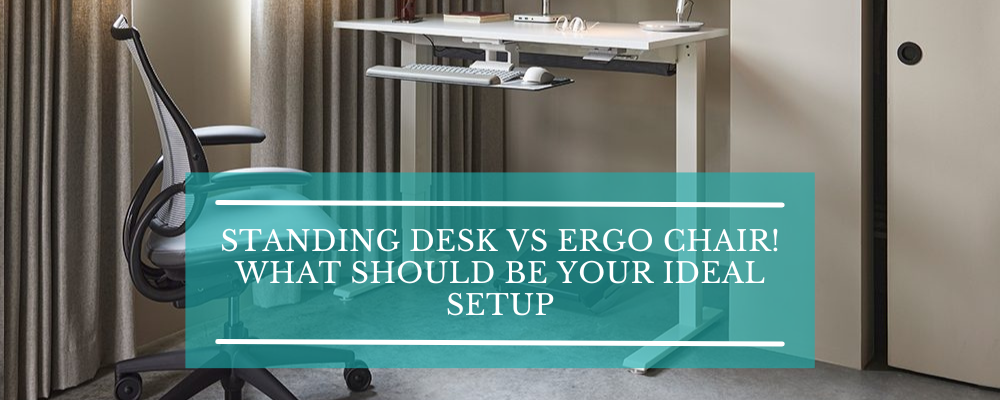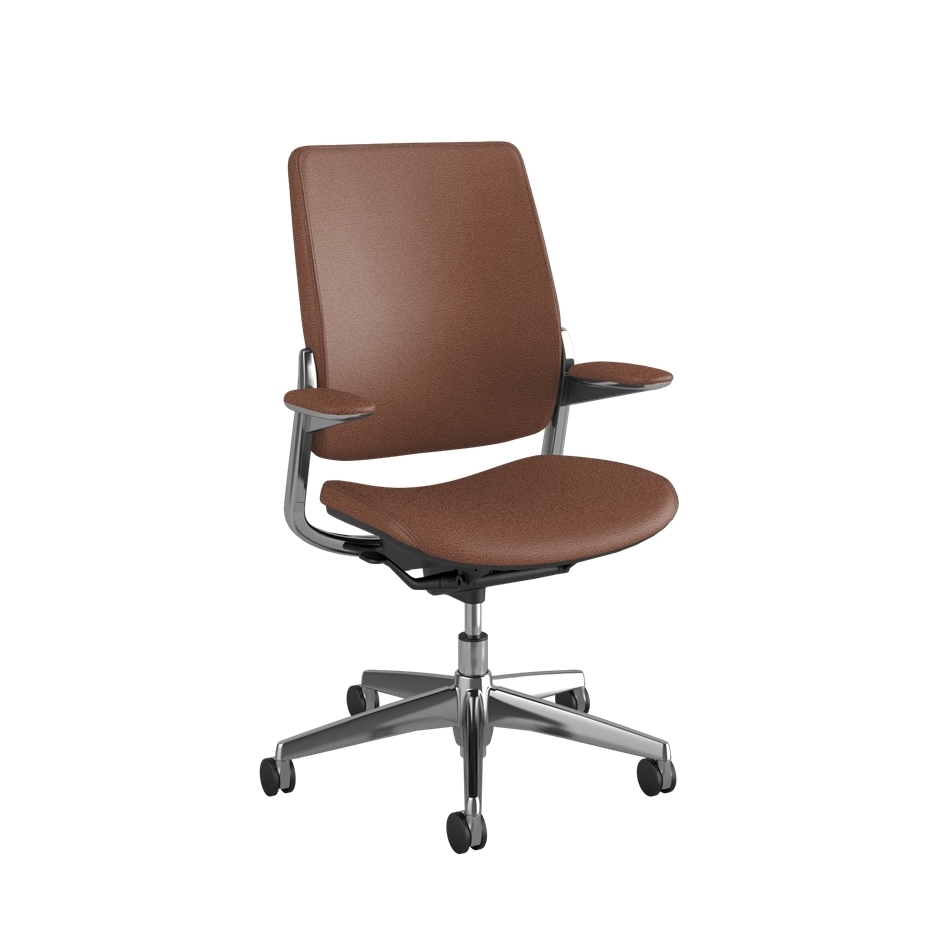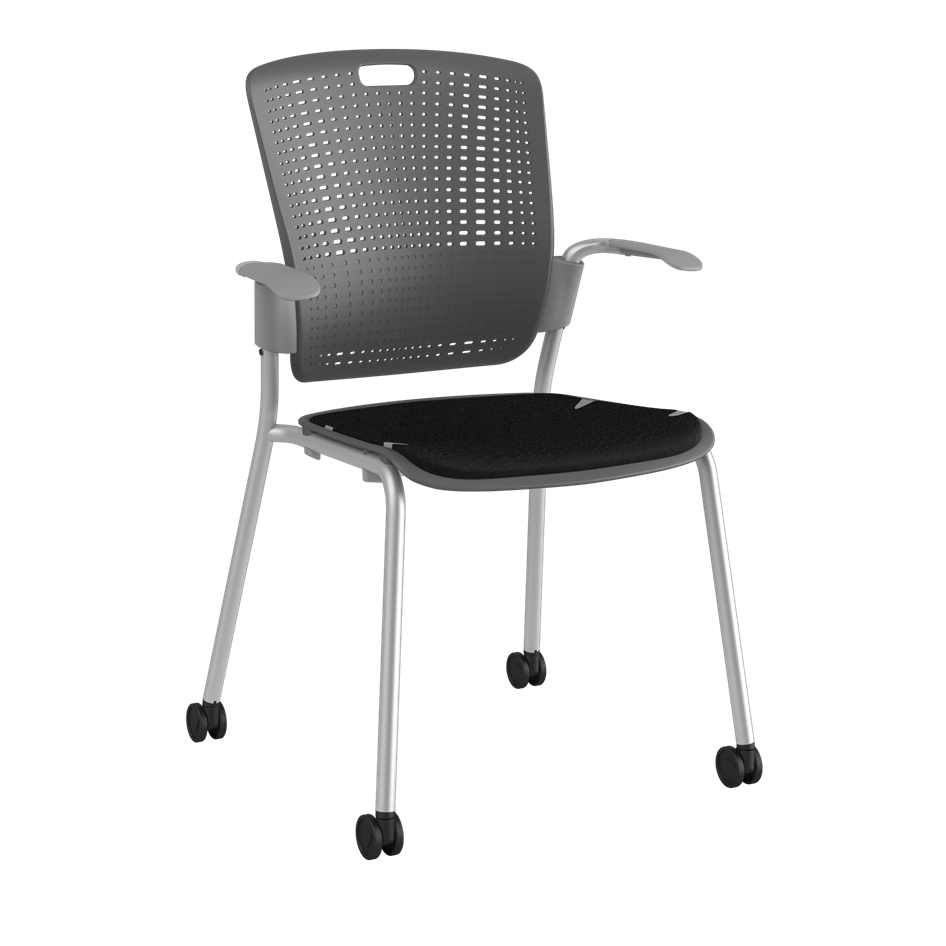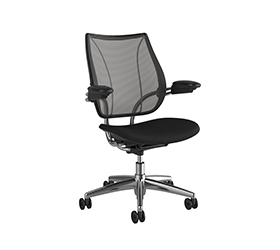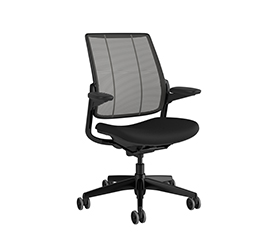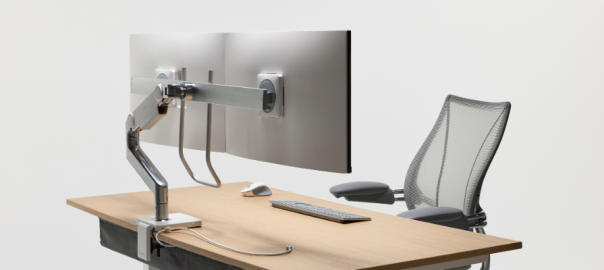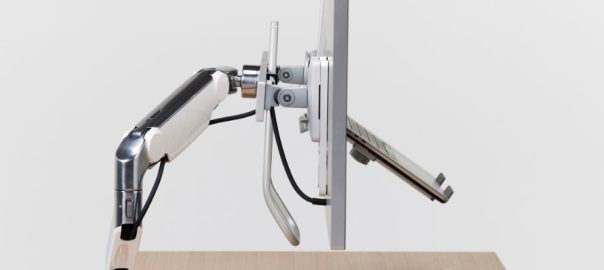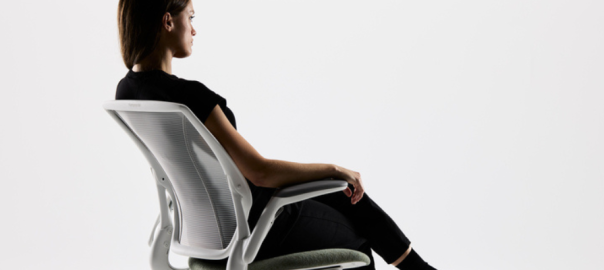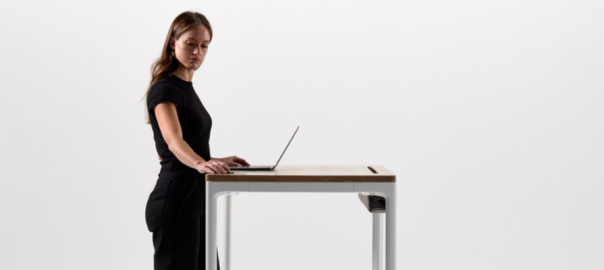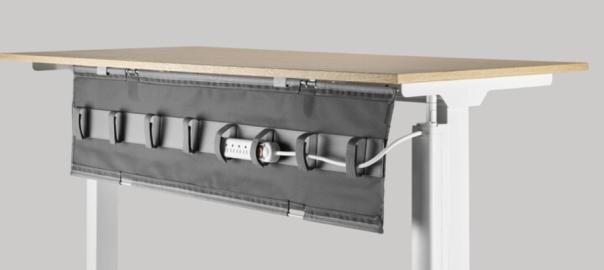Extended working hours have become increasingly common in corporate India. As employees spend more time sitting at desks, issues like back pain, muscle stiffness, and fatigue have grown more prevalent. This has driven demand for ergonomic solutions that provide better support and comfort.
Two popular options that have gained traction of late are standing desks, which allow you to alternate between sitting and standing during work hours, and ergonomic chairs engineered to properly align the back and neck. But is one better at easing physical strain while boosting productivity?
This blog tackles the standing desk vs ergonomic chair debate to help figure out what may be a wiser investment for offices and workstations.
Benefits of Standing Desks
- A sit-and-stand-up desk allows periodic changing of positions, shifting weight, and lightly engaging different muscle groups. This can alleviate chronic lower back pain stemming from long sitting hours.
- Though minimal, studies indicate standing leads to marginally higher calorie expenditure than sitting. Over months and years, this differential contributes to weight loss goals and combats health issues linked to sedentary lifestyles.
- Evidence indicates standing releases more dopamine, enhancing mood, energy, and engagement levels. Standing may also support higher serotonin production, countering mid-day energy crashes.
- Improved blood circulation and muscle activation while standing also reduce the risk of blood clots, a key concern during long sedentary periods.
- Standing and moving during calls or meetings enhances gestures, facial expressions, and vocal resonance, making interactions more animated and lively.
Read More: Benefits of Standing Desks for Improved Health and Productivity
Benefits of Ergonomic Chairs
- Quality ergonomic chairs have extensive adjustability matched to individual users, enabling proper spinal alignment and weight distribution through seat height, backrest angle, and lumbar depth changes.
- From softer, breathable meshes to moulded cushions, ergonomic chairs utilise materials to maintain comfort during long workdays, with built-in mechanisms also facilitating micro-movements.
- Ergonomic chair contours guide users into properly balanced postures, preventing poor posture habits like hunching or rounded shoulders.
- Adjustable armrests on quality chairs properly support forearms, reducing wrist strain during keyboard/mouse use.
- Automatic recline mechanisms encourage occasional seating position changes, promoting continued comfort over 8+ hours of workdays.
Read More: 15 Most-Surprising Benefits of Ergonomic Chairs You Didn’t Know Yet
Standing Desk vs Ergonomic Chair: Considerations Choosing Between Them
Standing desks and ergonomic chairs represent significant yet worthwhile investments to improve workplace ergonomics. But making the right choice between the available options depends greatly on individual needs and work style.
There are several factors requiring evaluation when deciding between these popular ergonomic furniture upgrades:
- Primary Work Activity: If daily tasks require prolonged computer work requiring multi-tasking/concentration, ergonomic chairs may better facilitate focus. For frequent meetings/calls, standing desks enable being more animated.
- Back Pain Profiles: If chronic lower back pain is the main concern, the flexibility to stand at will with standing desks helps more directly. Chairs excel at shoulder/neck pain.
- Injury/Condition Constraints: Those with medical issues like knee arthritis or lower body injuries restricting movement may find ergonomic chairs the optimal longevity solution relative to standing/transitioning.
- Standing Tolerance: Younger populations may better tolerate extended standing. Older cohorts or those physiques that tire more easily are likely to benefit from ergonomic seating.
- Weight Distribution Needs: Heavier individuals require robust standing desks rated for higher weights with anti-fatigue floor mats. But may still favour ergonomic support while working long-term.
- Workspace Spatial Constraints: If desktop space availability is tight, ergonomic chairs maximise the existing footprint since quality electric standing desks demand significantly more surface area.
- Tech Peripheral Compatibility Needs: With standing desks, monitor mounts/arms become imperative. Evaluate accessory costs to support proper ergonomic positioning while standing before buying stand-up desks.
- Work Culture Norms: Open concept offices, seeing higher impromptu meetings and collaborations, will benefit more from standing desks facilitating spontaneous interactions while allowing changing postures.
- Budgetary Limits: Both quality standing desks and advanced ergonomic chairs represent significant investments. Choose based on which alleviates acute pain issues within spending thresholds.
- Personal Movement Style: If you need to take frequent microbreaks, stand up while talking, or are restless, desks facilitating transitions align better with innate preferences.
Read More: Why Are Companies Embracing Ergonomics in the Workplace?
Future Trends in Office Furniture and Ergonomics
When evaluating Standing Desks vs Ergonomic Chairs, businesses should watch emerging technologies and design concepts that could further revolutionise healthy workspaces.
- Custom Programmable Desks: Smart desks allowing users to program automated scheduled position changes are emerging to match different work modes and tasks throughout the day.
- Preventative Wearables: From smart shoes tracking standing time to shirts monitoring posture, wearables capturing usage data and providing real-time ergonomic feedback will likely increase adoption.
- Movement Embedded Offices: With treadmill desks demonstrating the viability of walking while working, expanding trials embedding stretching or balancing movements directly into workspaces appears as the next frontier as costs fall.
Read More: Expert-Backed Proven Benefits of Ergonomics in the Workplace
Conclusion
Finding the right balance between adequate movement and proper ergonomic support when working for extended periods is essential for employee health, satisfaction, and productivity. When choosing between a standing desk and an ergonomic chair, consider your comfort needs, work style, space constraints, and budget. Many ergonomic specialists now recommend adopting elements of both solutions – an ergonomic chair for periods of focused work and the ability to stand during phone calls, meetings, or when you need an energy boost, as well as a height-adjustable desk to promote overall postural comfort, productivity, and well-being. With the right mix of equipment, you can stay healthy and avoid chronic pain despite increasing desk time in today’s workforce.

